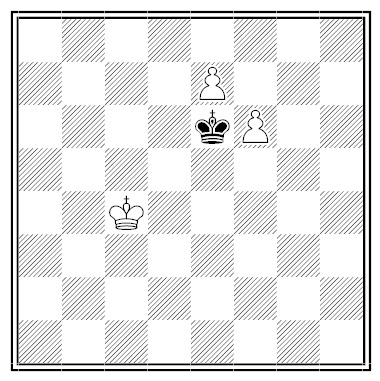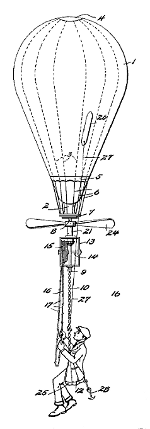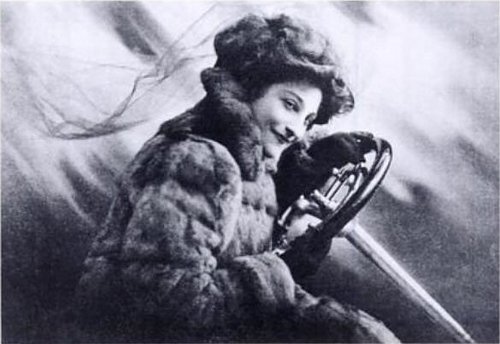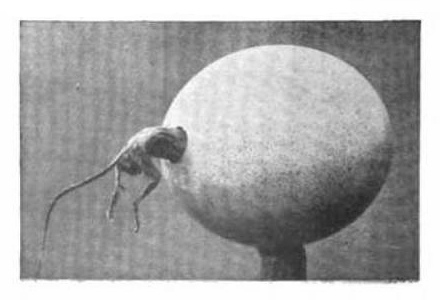
By Bruno Sommer, 1910. White has just moved, and he realizes too late that he could have mated Black on the move. What was his last move, and what was the mate?

By Bruno Sommer, 1910. White has just moved, and he realizes too late that he could have mated Black on the move. What was his last move, and what was the mate?
America’s favorite film monsters, according to a 2005 study by California State University:
“Younger people were the more likely to prefer recent and more violent and murderous slasher monsters, and to like them for their killing prowess. Older people were more attracted to non-slashers and attracted for reasons concerned with a monster’s torment, sensitivity, and alienation from normal society. … Overall, … monsters were liked for their intelligence, superhuman powers and their ability to show us the dark side of human nature.”

This is charming — in 1925, William Huffman patented a “jumping balloon” that could carry its operator hundreds of feet into the air. He foresaw a whole new world:
The balloon is particularly useful in jumping over natural or artificial barriers, such as buildings, trees, rivers, chasms and the like; as a convenient means for quickly obtaining considerable altitude for photographic and observation purposes; as a convenient and safe way to practice parachute landings and give preliminary instructions in lighter-than-air craft to students; as a convenient means of quickly and easily ascending to the tops of trees, houses and the like for inspection; and other purposes.
With that in view, the sport became a fad of sorts in the 1920s. Time magazine wrote, “Walk along the ground with a breeze at your back, approach a fence, bend your knees, spring lightly into the air when you feel the tug of the balloon. You will sail over the fence so easily and land so gently that you will be surprised.”
“All the legislatures will be busily engaged in passing laws prohibiting people from leaving the earth too freely, or rules for the right of way up and down and sideways,” predicted enthusiast Frederick S. Hoppin. “And then there will be all the new rules of etiquette: should you pass over or around a lady?”
From Lewis Carroll:
Men over 5 feet high are numerous.
Men over 10 feet high are not numerous.
Therefore men over 10 feet high are not over 5 feet high.

Dorothy Levitt started as a secretary at the Napier Car Company, but when the publicity-minded boss offered her a chance to race for him, she revealed a soul of pure fire:
The “chauffeuse” also wrote a newspaper column and in 1909 published The Woman in the Car, “a guide for women motorists” with “simple and understandable instructions and hints” (including “If you are driving alone a dog is great company” and “It might be advisable to carry a small revolver.”)
Unfortunately, the Western Field reported in 1904, “She is also famous as being the first motorist to obtain substantial damages, amounting to thirty-five pounds sterling, or $175, from the owner of a horse-drawn vehicle which collided with her car.” But she made her own repairs.
“Of all the illusions that beset mankind none is quite so curious as that tendency to suppose that we are mentally and morally superior to those who differ from us in opinion.” — Elbert Hubbard
A family of four has to cross a river. The father and mother each weigh 150 pounds, and each of the two sons weighs 75 pounds. Unfortunately, the boat will carry only 150 pounds maximum. How can they get across?

I send you a photograph showing the untimely fate which befell a too inquisitive rat. It had managed to force its way into an ostrich egg, but then found that getting out was quite another matter, and so perished in the miserable manner shown in the following picture, which was sent to me by Mr. William Fisher, Mahalapye, B. Bechuanaland. — Miss G. Gardiner, 78, Guilford Street, W.C.
— Strand, July 1908
See “A Man Drowned by a Crab” and “A Rat Caught by an Oyster.”
Here is a short poem which is complete without any exercise of the imagination. The rhymes need no precedent clauses; they are heads and tails at once. In their simple way they tell the sad story of a common domestic tragedy:

— William Shepard Walsh, Handy-Book of Literary Curiosities, 1892
A guy goes into a bank and says he wants to borrow $200 for six months. The loan officer asks him what collateral he has, and he says, “I have a Rolls Royce. Here are the keys — you can keep it until the loan is paid off.”
Six months later the guy comes back and pays off the $200 loan, plus $10 interest. The loan officer says, “Here are the keys. If you don’t mind my asking, why would a man who owns a Rolls Royce need to borrow $200?”
The guy says, “I had to go overseas for six months. Where else could I store a Rolls Royce for $10?”